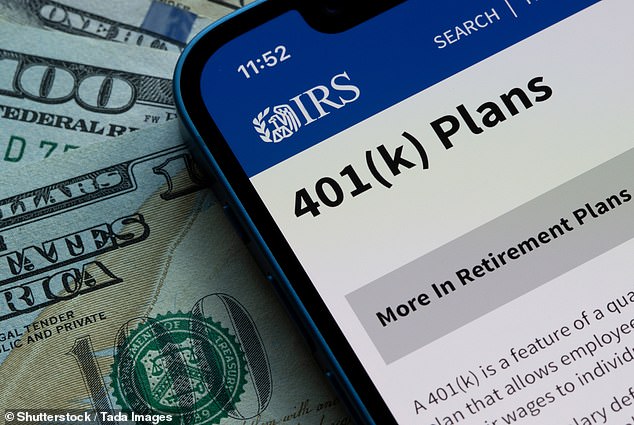Older workers can now put more savings than ever into their 401(K) accounts, under new rules that take effect in 2025.
Each year, the Internal Revenue Service (IRS) announces the maximum amount savers can deposit into their workplace retirement account, which is adjusted for inflation.
Americans over age 50 can also put extra money into their retirement savings with catch-up contributions.
Starting next year, workers specifically between ages 60 and 63 will have a higher catch-up contribution limit, according to the IRS. announced Friday.
The change is designed to help boost savings for people in their 60s, who may not have saved enough money earlier in their lives or who have entered and exited the workforce to raise a family.
Older workers can now put more savings than ever into their 401(K) accounts, under new rules that take effect in 2025.
Starting in 2025, workers ages 60 to 63 can make a catch-up contribution of up to $11,5000 in their 401(K).
This means that people who reach those ages at some point over the next year will be able to put up to $34,750 into their workplace retirement plans.
That’s about 14 percent more than in 2024 and marks the biggest change to 401(K) contribution rules in two decades. The Wall Street Journal reported.
The change comes amid a series of inflation adjustments by the IRS, which the tax authority makes every year.
He also announced the maximum amounts that people of all ages can save in their retirement accounts in 2025.
Americans under age 50 can contribute up to $23,500 to their 401(K) plans next year, an increase of $500 from 2024.
Those between 50 and 59 years old can contribute $31,000 total, those between 60 and 63 years old can contribute $34,750, and those over 64 years old can contribute $31,000.
Workers who participate in the federal government’s 403(b) and Thrift Savings Plan will also be able to increase their annual contribution to $23,500 in 2025, up from $23,000 in 2024.
However, some annual contributions remain the same.
The annual IRA contribution limit will remain at $7,000 and the IRA catch-up contribution limit for people age 50 and older will remain at $1,000 for 2025.

Starting in 2025, workers ages 60 to 63 can make a catch-up contribution of up to $11,5000 in their 401(K).

The IRS also announced the maximum amounts people of all ages can save in their retirement accounts in 2025.
It comes after the IRS announced an increase in standard deductions for 2025, which is the portion of annual income exempt from taxes.
For single taxpayers and married people filing separately in 2025, the standard deduction will increase to $15,000, an increase of $400 from 2024.
For couples filing jointly, it will be $30,000 by 2025, an increase of $800 from the previous year.
Meanwhile, heads of household will get a standard deduction of $22,500, which is an increase of $600 from 2024.
The IRS makes these adjustments each year to account for inflation, which has been on a downward trajectory in recent months.
The annual inflation rate rose 2.4 percent from a year earlier in September, marking a sharp decline from highs of 9.1 percent in June 2022.
This means that While taxpayers will again see higher standard deductions by 2025, the increases announced last month are smaller than those seen in recent years.


